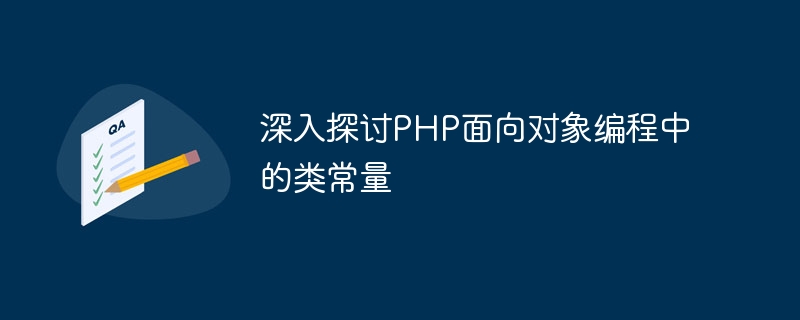

PHP is a commonly used programming language that is widely used in the development of web applications. In object-oriented programming in PHP, class constants are an important concept. This article will delve into class constants in PHP object-oriented programming and provide some code examples to help readers better understand and apply them.
1. Definition and characteristics of class constants
Class constants are immutable values declared in the class definition. Unlike ordinary class properties, class constants remain unchanged throughout the life cycle of the class and can be accessed directly through the class name. Use the keyword const when defining class constants. The naming rules for constants are the same as class attributes. Generally, all uppercase letters are used, and underscores are used to separate words.
The characteristics of class constants are as follows:
The following is a sample code:
class MathUtil { const PI = 3.14159265359; public function calculateCircleArea($radius) { return self::PI * pow($radius, 2); } } echo MathUtil::PI; // 输出3.14159265359 $mathUtil = new MathUtil(); echo $mathUtil->calculateCircleArea(5); // 输出78.539816339745
In the above code, we define a MathUtil class, which contains a constantPI, and defines AcalculateCircleAreamethod is used to calculate the area of a circle. We can access the constantPIdirectly through the class name, or we can calculate the area of the circle by calling a method on the instance object.
2. Application of Class Constants
The following is an example that demonstrates how to define some common HTTP response status codes as class constants:
class HttpStatus { const OK = 200; const NOT_FOUND = 404; const SERVER_ERROR = 500; } function getHttpStatusMessage($statusCode) { switch ($statusCode) { case HttpStatus::OK: return "OK"; case HttpStatus::NOT_FOUND: return "Not Found"; case HttpStatus::SERVER_ERROR: return "Server Error"; default: return "Unknown"; } } echo getHttpStatusMessage(HttpStatus::OK); // 输出OK
In the above code, we define an HttpStatus class, which contains Some commonly used HTTP response status codes. The functiongetHttpStatusMessagereturns the corresponding status message based on the incoming status code. By using class constants, we can uniformly manage HTTP status codes and corresponding status messages throughout the application.
Summary:
This article deeply discusses class constants in PHP object-oriented programming, including the definition and characteristics of class constants, as well as their application scenarios. Through the introduction of these sample codes, readers should be able to better understand and apply class constants and improve their practical abilities in PHP object-oriented programming. Hope this article can be helpful to readers.
The above is the detailed content of An in-depth look at class constants in PHP object-oriented programming. For more information, please follow other related articles on the PHP Chinese website!




